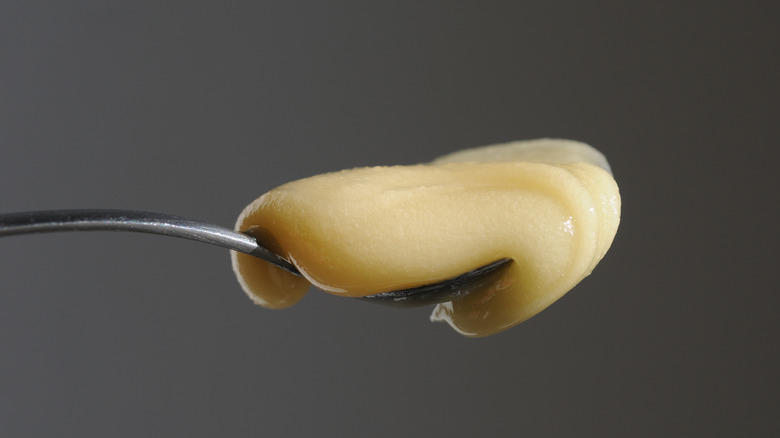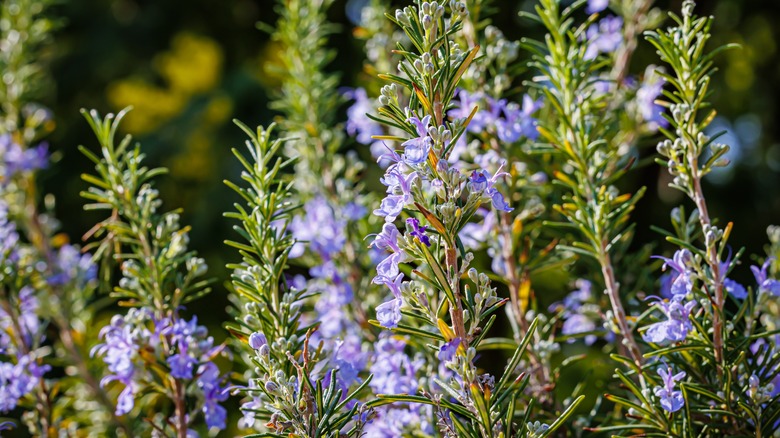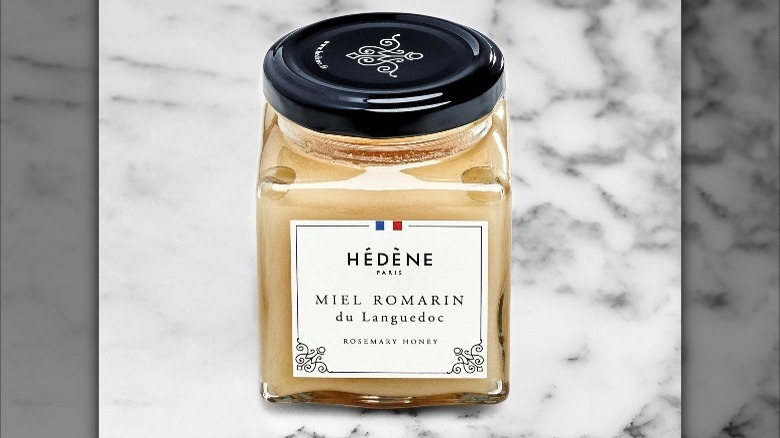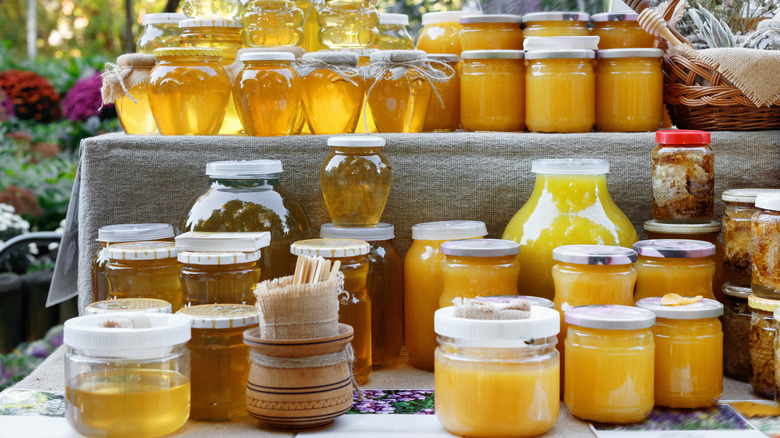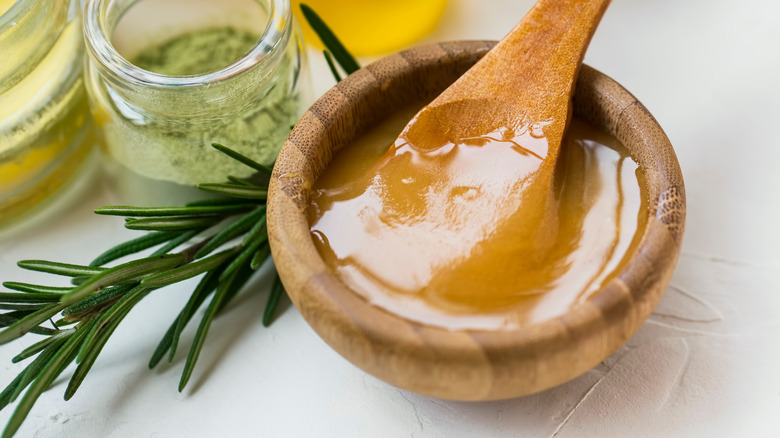Narbonne Is The Delicate French Honey You Should Know
Narbonne honey is a type of honey with a very distinct flavor that is native to southwestern France. A port city of the Languedoc region, Narbonne was a Roman settlement founded in 118 B.C. with a booming trade business thanks to its location on the Mediterranean. The city was known as Narbo at the time and sat at the junction of two important roads: one that connected Italy through France to Spain, and the other that led north to the Atlantic Ocean. The honey produced in this area came tinged with notes of rosemary, as the wild herb, which the bees fed on, was abundant in the area. The Romans gave it the name Narbonne honey, and it was the most expensive and famous honey in the world at the time.
The city of Narbonne became a competitor of Marseille, and Julius Caesar settled his legion there to establish its port. He is known to have written about the honey of Narbonne in his dispatches. The infamous honey has surfaced quite a bit in literature over the years and was even served aboard the RMS Titanic as a breakfast condiment for first-class passengers.
What is Narbonne honey?
The area surrounding Narbonne is a dry and rocky terrain with brush known as the garrigue. Wild herbs grow in the area, and the bees feed on the plants. What makes Narbonne honey special is the flavor nuances imparted from the specific herbs of the garrigue. Shrubs of rosemary grow wild along the Mediterranean, and bees are attracted to their bright blue flowers. The bees feed on their nectar and produce honey with a hint of rosemary. The bees may also feed on nearby thyme, lavender, and cistus (also known as labdanum and rock rose) which add delicate notes to the flavor of the honey. Narbonne honey is not confined to being made from just one flower. Its flavor is composed of a medley of spring flowers which is what makes it so highly sought after.
Narbonne honey is a pale blond color, and sometimes even white, gray, or ivory with a smooth, creamy texture and subtle aroma. Some say it resembles lemon curd. While it may no longer be the most expensive honey in the world, it still has a substantially higher price tag than your run-of-the-mill bottles of golden bears.
The history of Narbonne honey
Narbonne honey was mostly used medicinally in the 12th through 20th centuries. It was believed to support a healthy respiratory system, help with digestion, and serve as just a general libation to promote overall well-being. Bees were held in high esteem in medieval Europe. Their wax was important for Christian religious practice and honey was the only sweetener available before the onset of the trade market. The honey was harvested just once per year in June around the feast of St. John.
During the 20th century, the landscape of the garrigue shifted drastically. Vineyards started growing in the area, and the vegetation added a whole dimension to the terroir. The invasive Aleppo pine trees also started to take over the garrigue as the practice of cattle raising deteriorated. Attention in the region has shifted to the vineyards, and the amount of rosemary has diminished, reducing the quantity of Narbonne honey produced.
What Narbonne honey tastes like and how to enjoy it
Rosemary is the most dominant herb that comes through on the palate in Narbonne honey. The medley of spring flowers the bees feed on offers a subtle and refined green flavor with more floral overtones than other types of honey, such as acacia. The honey has a slight acidity and overall freshness to its taste. Although it has a creamy texture, like most natural and raw honey, there may be a crystallized graininess to the mouthfeel.
Because of its creamy, jelly-like texture, Narbonne honey is the perfect replacement or accompaniment for jam. Spread it on hot toast, bread, a croissant — anywhere you want a hint of delicate sweetness. It can be added to tea, warm milk, or coffee. The honey is fit for any dessert or as an accompaniment to fruit and yogurt, but the vegetal undertones also go well with savory dishes such as cheese, crackers, and charcuterie. Narbonne honey is so precious, it may be best eaten straight out of the jar with a spoon as a sweet treat.
Where to find Narbonne honey
Unfortunately, pure, authentic Narbonne honey is hard to come by these days due to the expansion of the vineyards. Buyers best beware of imitation honey on the market where they just add rosemary flavoring to regular honey and sell it as Narbonne honey. Other producers engage in some other methods of honey subterfuge. Some feed the bees sugar dough which affects the quality of the honey. Other producers may add sugar water to honey to make it appear liquid.
Your best bet is to peruse gourmet purveyors or find a reputable retailer online. Real Narbonne honey will only be found in a jar that cites it is from Narbonne. The real stuff is more costly than other honey, you may spend upwards of $20 for an 8-ounce jar, as well as have to cover shipping costs. A trip to visit Narbonne is also always an option. It's a place rich in all kinds of history, and the beloved honey is ubiquitous in the city center.
Nutritional value of Narbonne honey
The herb rosemary has many health benefits due to its phytochemical content, per WebMD. Raw honey is also touted for a myriad of health benefits including its antioxidant composition and antibacterial properties, Healthline writes. According to Honey Green, the combination of the two power-packed ingredients makes rosemary honey from Narbonne a helpful healing agent. It may contain anti-inflammatory abilities, particularly with liver support. It also may aid in blood circulation as well as help with digestive ailments such as heartburn, indigestion, and gas or bloating. The honey is often given to soothe coughs, colds, and congestion, and may help with wound healing when applied topically. Honey in and of itself has beneficial properties for the skin, per Healthline, and the silky smooth texture of Narbonne honey makes it a perfect addition to beauty products.
Rosemary has been touted as helping with memory for ages, as Shakespeare famously wrote in Hamlet, "There's rosemary, that's for remembrance." A drop of Narbonne honey in your tea or coffee just may help your workday.
